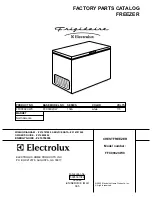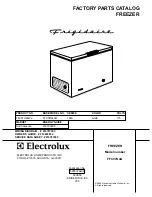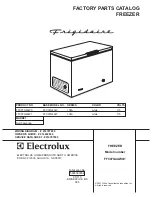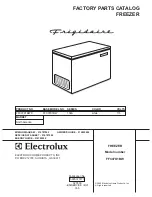
Function description
Chapter 3
OPERATION MANUAL
V2.3.0en/04.08.21//1.30
RotaCool®
31
Designation
Specification
Calcium carbonate per liter
≤ 1.5 mmol/l; corresponds to a water hardness of: ≤ 8.4 °dH
(soft)
pH value
between 6.0 and 8.5
Ultrapure water, distillates
Add 0.1 g of sodium carbonate (Na
2
CO
3
) per liter
Not approved water
Distilled, deionized, demineralized, chloric, ferruginous, ammoniacal, con-
taminated or untreated river water or sea water
Volume circulated (at least)
3 l/min.
Thermal fluid: Water without ethylene glycol
Use
≥ +3 °C
Thermal fluid: Water-ethylene glycol mixture
Use
< +3 °C
Thermal fluid composition
The mixture’s temperature must be 10 K below the permissible min. tem-
perature. For the permissible temperature range, refer to the datasheet.
→
3.3
To be noted when planning the test
Observe the intended operation.
→
Page 14, section
The focus is on your application. Bear in mind that system performance is influenced by heat trans-
fer, temperature, thermal fluid viscosity, volume flow, and flow speed.
▪
Make sure the electrical connection is adequately dimensioned.
▪
The installation location of the temperature control unit should be selected so as to ensure ade-
quate fresh air, even with water-cooled chillers.
▪
The maximum flow pressure of a temperature control unit must be taken into account in case of
pressure-sensitive applications, such as glass reactors.
▪
Cross-section reduction or shut-off in the thermal fluid circuit must be avoided. Take appropriate
measures to limit the pressure in the system. Observe the data sheet of your glass apparatus and
the data sheet of your temperature control unit.
→
From page 50, section
▪
Check whether it is necessary to use an external bypass for temperature control units without
pressure limitation.
▪
In order to prevent the risk of overpressure in the system, the thermal fluid must always be ad-
justed to room temperature before switching off. This will prevent damage to the temperature
control unit or the application. Any isolating valves must remain open (pressure equalization).
▪
Select the thermal fluid to be used in such a way that it not only permits the minimum and maxi-
mum working temperature but is also suitable with regard to fire point, boiling point, and viscosi-
ty. In addition, the thermal fluid must be compatible with all the materials in your system.
▪
Avoid bending the temperature control and cooling water hoses (if required). Use suitable angle
pieces and lay the hose connections with a large radius. Take the minimum bending radius from
the data sheet of the temperature control hoses used.
▪
The selected hose connections must be able to withstand the thermal fluid, the working tempera-
tures and the admissible maximum pressure.
▪
Check the hoses at regular intervals for any material fatigue (e.g. cracks, leaks).
▪
Keep the temperature control hoses as short as possible
-
The inside diameters of the temperature control hoses must correspond at least to the
pump connections. Select bigger inside diameters for longer line lengths to compensate
for pressure loss in the piping.
-
The viscosity of the thermal fluid determines the pressure drop and influences the tem-
perature control result, especially at low working temperatures.
-
Too small connectors and couplers and valves can generate significant flow resistance.
Your application will therefore be slower to reach its design temperature.
▪
Basically, you should only use the thermal fluid recommended by the manufacturer and only
within the usable temperature and pressure range.
Thermal fluid: Water
Содержание MPC RotaCool
Страница 1: ...MPC RotaCool...
Страница 2: ......
Страница 3: ...OPERATION MANUAL MPC RotaCool...
Страница 4: ......
Страница 10: ...OPERATION MANUAL RotaCool V2 3 0en 04 08 21 1 30 10...
Страница 50: ...Annex OPERATION MANUAL Chapter 8 RotaCool V2 3 0en 04 08 21 1 30 50 8 Annex...
Страница 51: ......
















































